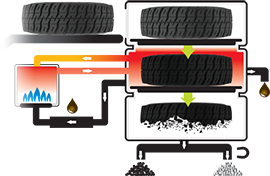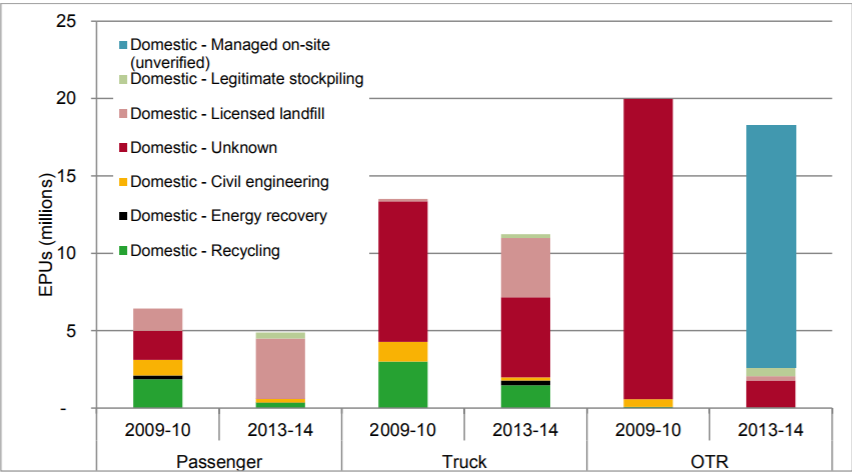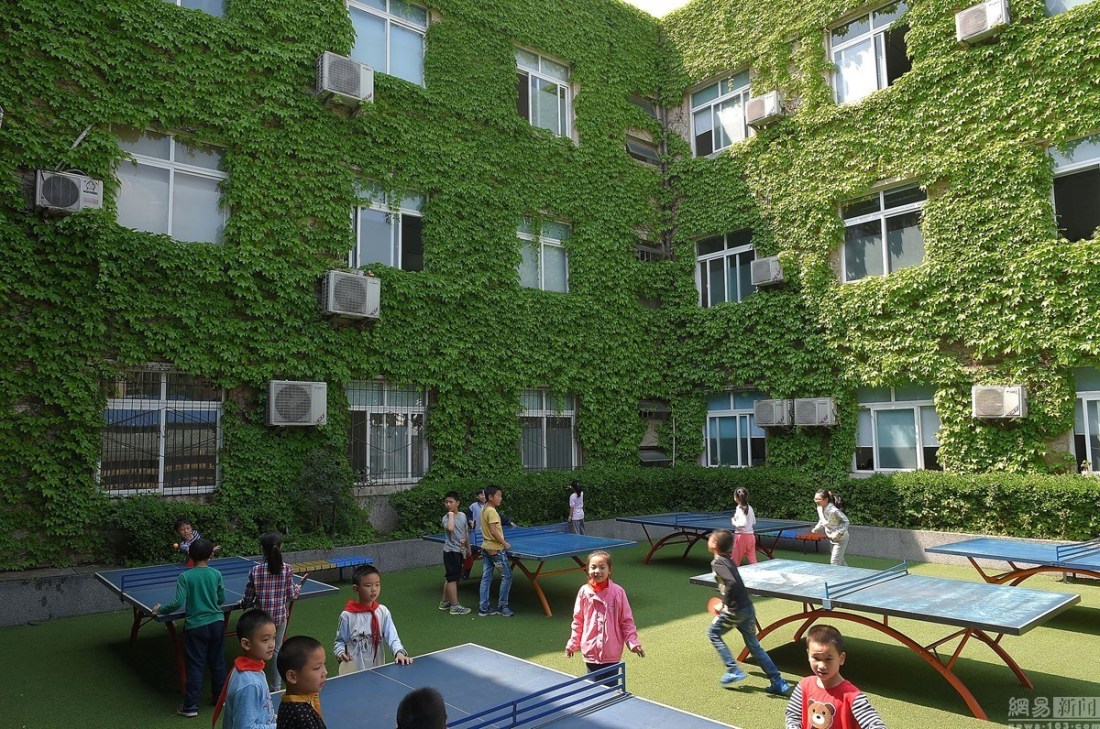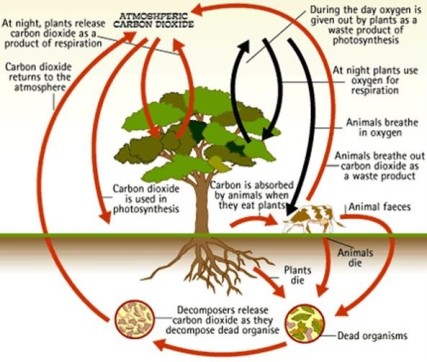Facts and trends
There are an estimated one billion of end of life tyres (ELTs) are generated each year globally, take Australia as an example, 56 millions of spent tyres are generated last year, moreover, one passenger tire per person is discarded each year in the developed countries (Tyrestewardship.org.au, 2018).

Therefore discard tyres disposal has become a big risk on environment, especially when they are treated inappropriately. For example, uncontrolled open-air combustion of tyres will release large plumes of black smoke and other noxious substances into the atmosphere, soil and water cycle (Mfe.govt.nz, 2018).
For watching my vlog, please click the link below:
Existing ELTs uses
There are numerous ways to deal with ELTs as a low-cost and easy-to-get material.
One of the most often used option is the tire-derived fuel (TDF), which is used as an alternative heat source in industrial plants and thermal power stations. Tyres has an equal or better performance than other traditional fuels, such as coal. It can be seen from the table below that within a controlled environment, TDF will generate greater energy than wood and coal but lesser emission than them, which are potentially help our environment in the aspect of reducing greenhouse gas.
Over half of ELTs in the US and 70% in Japan are reused as fuel in 2005, which is mainly used in cement kilns, paper mills and industrial boilers (Rubberassociation.ca, 2018).
Another major use of ELTs is recovered as materials used in civil engineering. The current successful applications of ELTs in civil engineering including retaining wall, sea wall, sound barriers, race track protector and cyclone shelter (Rubberassociation.ca, 2018).
The picture below shows us a new high-performance wall system which constructed by an TSA accredited recycler, Lowest Enterprises of West Australia in April this year (Tyrestewardship.org.au, 2018).
 Asphalt pavement is another destination of ELTs, which blended ground tyres with polymers together to create a durable, high-performance and noise-reduction pavement .
Asphalt pavement is another destination of ELTs, which blended ground tyres with polymers together to create a durable, high-performance and noise-reduction pavement .
Although there are many ways to reuse ELTs, the limitations are also obvious. For example, like we discussed before, a mature control system of TDF is vital in this case, the combustion process will produce noxious substances which will harm our environment if the control system failed. In another case, how much of ELTs can be used in asphalt pavement in such as kindergarten playground which will no harmful influence on children? It’s still an important consideration in engineering. Moreover, the ELTs used as retaining wall, cyclone shelter, etc. will possibly become a great breeding ground for mosquitoes and many diseases (Recycling et al., 2018).
A Business Case—Green Distillation Technologies
Green Distillation Technologies (GDT) is an Australian company, which aims to solve the recycling problem of enormous number of end-of-life tyres (ELTs). GDT was focused on researching advanced technology, which is re-producing spent tyres back into high-valuable raw materials without any pollutant. Such materials include carbon, oil and steel.
GDT named their cutting-edge ELTs recycling process as Destructive Distillation which is based on chemistry knowledge, developed by their Technical Director Denis Randall. The whole process start with putting the whole end of life tyres into a process chamber, which is evacuated of air and sealed. In this stage no further step is required, for example, shredding the tyres. Then the chamber is heated, which contributed to the destruction of tyres. Tyres will turn into different substances in this stage, and oil will be collected firstly. Carbon and steel will be collected at the end of reaction after cooling down. This reaction process cycle takes around 55 minutes and deal with 500kg spent tyres. The whole manufacture process is under control and no harmful substances released to air, soil and water. Oil produced in the reaction process is used as heat resource and will be sell to another industrial plants, and it also be burned at the next round of heat process. Steel will be sent to the tyre manufacturer for making of new tyres. Carbon as the world’s most widely used industrial chemical will be used in different products, such as brake pads and soil enhancement.


Activated carbon even be used in water filters and cosmetic industry, due to its small and low-volume pores spread at its surface, which can be used to absorb impurities inside of water and our skin. The most often activated carbon cosmetic product in the market is blackhead removal mask (Recycling et al., 2018).

In my opinion, the whole manufacturing process is align with the Ecological engineering design principles. The reaction process is design for converting end of life tyres into three valuable materials, steel, oil and carbon, which significantly reduced the amount of waste tyres and relieved the pressure that people put on our environment. As the most engineering ethics codes said that engineers have the responsibility to serve and protect society, of course, design should also be profitable and feasible. At this aspect, GDT is benefit both society and the natural environment, as well as making profit for their stakeholders. As the eco principle stated, companies should follow the professional certification and criterion, at the meanwhile, engineering design practices that acknowledge the motivating values and purposes will be more successful (Bergen, Bolton and Fridley, 2001). We can find that GDT is accredited by Australian Tyre Recycling Association which give us evidence that it follow the Australian tyres recycling standard. Moreover, the raw material used in the reaction process is end of life tyres that possibly being buried underground and potentially caused significant risk to natural environment (Bergen, Bolton and Fridley, 2001). And during the reaction process, heat is generated by burning the oil they produce before, thus the process is emission free. In other words, no extra natural fossil fuel have been cost in this process such as coal and diesel, which means it’s design minimized the energy expended and maintain the energy among the system from one trophic level to others.
Current situation of end-of-life tyres in Australia and government efforts
The situation of domestic ELTs destination in Australia is shown at the bar chart below. We can see from it that recycling only takes a small proportion in all types of spent tyres. Most of the ELTs are disposed to landfill, stockpiled or illegally dumped.

To deal with those issues and promote tyre recycling within Australia, Tyre Product Stewardship Scheme is invented by Australian government to provide industry framework to effectively reduce the environmental, health and safety impacts of the 56 million ELTs which reach the end of their life in Australia each year. To ensure the implementation of national Tyre Product Stewardship Scheme, Tyres Stewardship Australia (TSA) was established on 20 January 2014. TSA established a robust governance strategic plan for the next few years, which mainly focus on audit and help to develop the investment market (Department of the Environment and Energy, 2018).

What you can do to help
While ELTs caused a big risk to our natural environment in the past few decades, at the meantime, it also offers an excellent opportunity for achieving sustainable objectives. The application of spent tyres as fossil fuel substitutes and converting waste to heat material such as oil that GDT produced have a positive impact on environment by reducing exploitation activity about virgin resources. ELTs also promote the development of those innovative company like GDT as well as providing positions on labour market.
I believe Australian spent tyres recycling market is still under development. Moreover, Australian market has bright prospect in future and waiting for more participants enter.
So what we can do to help? The simplest thing that you can do is to ensure your spent tyres or those for your business going to appropriate destination, do not discard them illegally. You can make this happened if you choose the TSA accredited brand or retailer when it’s time to get new tyres, TSA has responsibility to ensure the discard tyres from retailer go to the correct recycling company. Many industry leaders in tyres manufacturing have partnered with TSA to work together for achieving the objective of sustainable development. IF you are a part of the tyre manufacturing industry, you can choose to purchase the recycled steel or other materials from ELTs recycling companies, which will encourage the Australian tyre recycling market directly (Canstar Blue, 2018).
Reference
Bergen, S., Bolton, S. and Fridley, J. (2001). Design principles for ecological engineering. 18 (2001) 201–210, pp.204-208.
Canstar Blue. (2018). How Are Tyres Recycled in Australia? – Canstar Blue. [online] Available at: https://www.canstarblue.com.au/vehicles/guide-recycling-used-car-tyres/ [Accessed 8 May 2018].
Department of the Environment and Energy. (2018). Department of the Environment and Energy. [online] Available at: http://www.environment.gov.au/protection/national-waste-policy/tyres [Accessed 8 May 2018].
Mfe.govt.nz. (2018). Potential Environmental Impact of Uncontrolled Tyre Fires | Ministry for the Environment. [online] Available at: http://www.mfe.govt.nz/publications/waste/end-life-tyre-management-storage-options/6-potential-environmental-impact [Accessed 8 May 2018].
Nepc.gov.au. (2018). STOCKS & FATE OF END OF LIFE TYRES – 2013-14 STUDY. [online] Available at: http://www.nepc.gov.au/system/files/resources/8f17c03e-1fe7-4c93-8c6d-fb4cdc1b40bd/files/stocks-and-fate-end-life-tyres-2013-14-study.pdf [Accessed 8 May 2018].
Recycling, T., GDTC, T., Blog, N., Media, I. and Newsletter, G. (2018). Tyre Recycling in Australia – GDTC. [online] Green Distillation Technologies Corporation LTD. Available at: http://www.gdtc6.com/tyre-recycling/ [Accessed 8 May 2018].
Rubberassociation.ca. (2018). Managing End-of-Life Tires. [online] Available at: http://www.rubberassociation.ca/files/ELT%20Full%20Report,%202008.pdf [Accessed 8 May 2018].
Tyrestewardship.org.au. (2018). Tyre Stewardship | Homepage. [online] Available at: https://www.tyrestewardship.org.au/#block-388-1006 [Accessed 8 May 2018].








